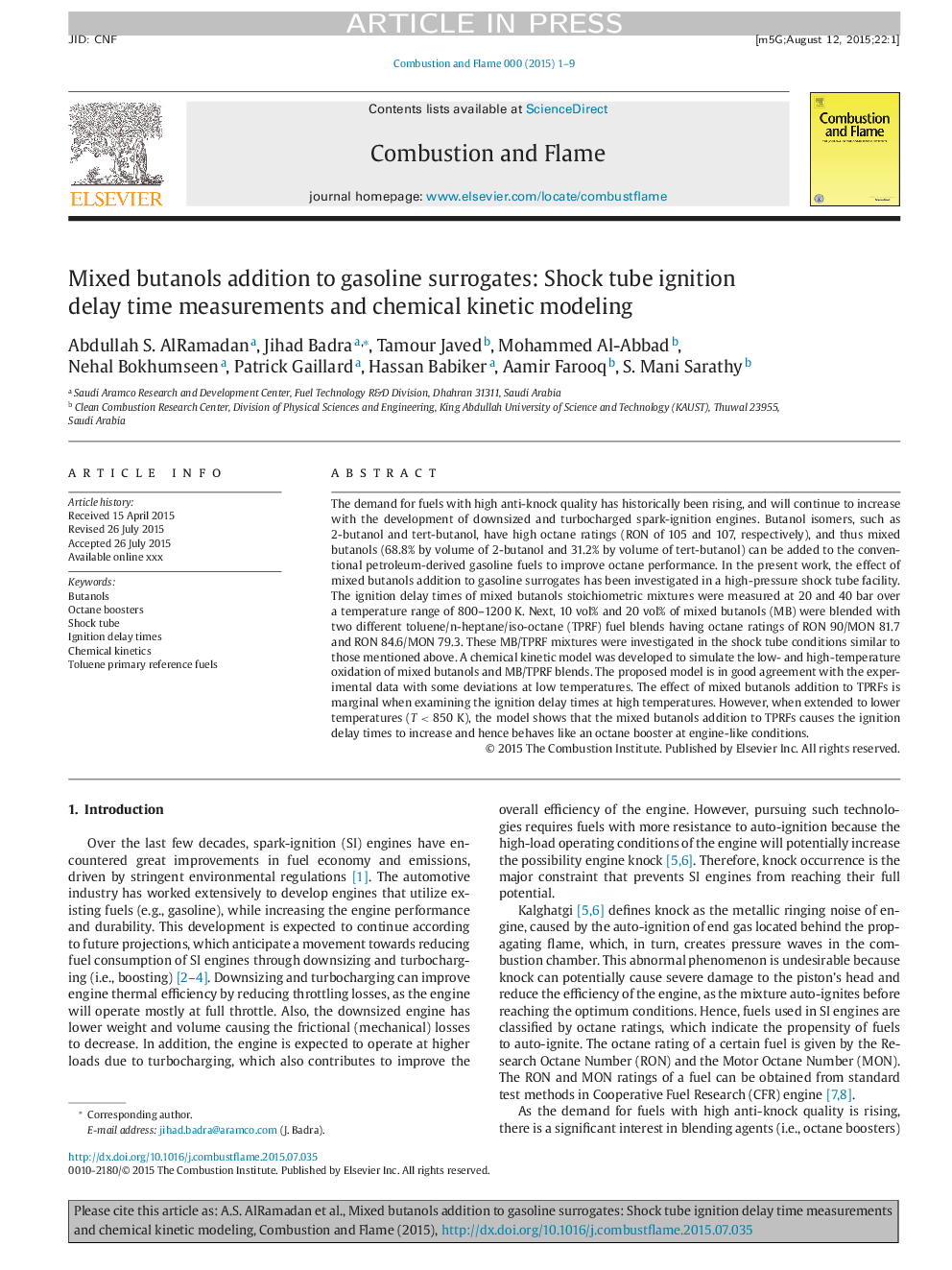| Article ID | Journal | Published Year | Pages | File Type |
|---|---|---|---|---|
| 10264787 | Combustion and Flame | 2015 | 9 Pages |
Abstract
The demand for fuels with high anti-knock quality has historically been rising, and will continue to increase with the development of downsized and turbocharged spark-ignition engines. Butanol isomers, such as 2-butanol and tert-butanol, have high octane ratings (RON of 105 and 107, respectively), and thus mixed butanols (68.8% by volume of 2-butanol and 31.2% by volume of tert-butanol) can be added to the conventional petroleum-derived gasoline fuels to improve octane performance. In the present work, the effect of mixed butanols addition to gasoline surrogates has been investigated in a high-pressure shock tube facility. The ignition delay times of mixed butanols stoichiometric mixtures were measured at 20 and 40Â bar over a temperature range of 800-1200Â K. Next, 10Â vol% and 20Â vol% of mixed butanols (MB) were blended with two different toluene/n-heptane/iso-octane (TPRF) fuel blends having octane ratings of RON 90/MON 81.7 and RON 84.6/MON 79.3. These MB/TPRF mixtures were investigated in the shock tube conditions similar to those mentioned above. A chemical kinetic model was developed to simulate the low- and high-temperature oxidation of mixed butanols and MB/TPRF blends. The proposed model is in good agreement with the experimental data with some deviations at low temperatures. The effect of mixed butanols addition to TPRFs is marginal when examining the ignition delay times at high temperatures. However, when extended to lower temperatures (T < 850Â K), the model shows that the mixed butanols addition to TPRFs causes the ignition delay times to increase and hence behaves like an octane booster at engine-like conditions.
Related Topics
Physical Sciences and Engineering
Chemical Engineering
Chemical Engineering (General)
Authors
Abdullah S. AlRamadan, Jihad Badra, Tamour Javed, Mohammed Al-Abbad, Nehal Bokhumseen, Patrick Gaillard, Hassan Babiker, Aamir Farooq, S. Mani Sarathy,
